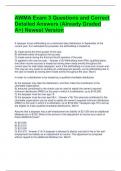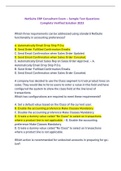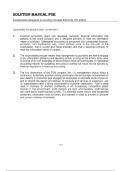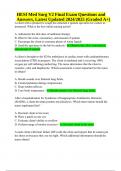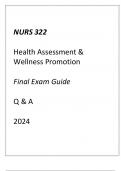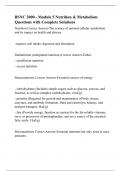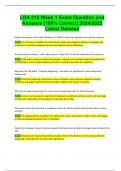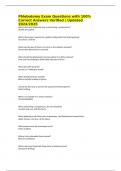Exam (elaborations)
AWMA Exam 3 Questions and Correct Detailed Answers (Already Graded A+) Newest Version
- Course
- Institution
AWMA Exam 3 Questions and Correct Detailed Answers (Already Graded A+) Newest Version A taxpayer incurs withholding on a retirement plan distribution in September of the current year. For estimated tax purposes, the withholding is treated as A) made during the third quarter of the year. B) w...
[Show more]
